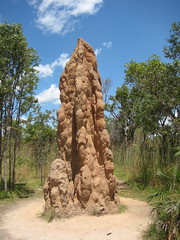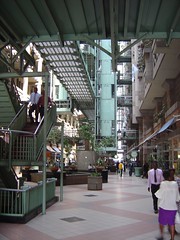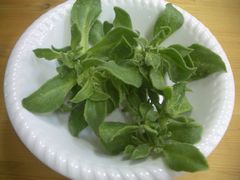March 27, 2012
Get Inspired by Nature: Showcasing Interesting Examples
Keywords: Newsletter
JFS Newsletter No.114 (February 2012)
"JFS's 'Get Inspired by Nature' Project" (No. 5)
With a view to reducing environmental impacts in manufacturing, research and development activities focusing on manufacturing approaches inspired by nature - so-called "biomimetics" - have been expanding rapidly since 2000. The number of biomimetics-related papers published in 2009 was about six times the number published in 2000.
Following its "Biomimicry" Project in 2005, JFS started the "Get Inspired by Nature" project last year. As part of this project, we have released a series of articles about related topics, including an interview with a Japanese expert and a report of a visit to a university laboratory by kids reporters. We also are preparing a list of related research and cases of commercialization inside and outside Japan, which will be available to the public on our website.
http://www.japanfs.org/en/pages/031298.html
In this issue, we introduce some particularly interesting cases selected by volunteer members who have been collecting information for this project.
*-*-*-*-*-*-*-

Image by Bankside.
Some Rights Reserved.
Termites: Eco-Friendly Architects
In the Eastgate Center, a nine-story commercial complex which opened in 1996 in Harare, the capital of Zimbabwe, the air is comfortably cool and well-ventilated without artificial air conditioners.
To set up such a wonderful air-conditioning system, architect Mick Pearce and the technology consultant agency Arup focused on the structure of mounds built by certain species of termites living in Africa.

Image by garybembridge. Some Rights Reserved.
The structure of the Eastgate Center allows air to flow up and down as in a chimney. High-density cool air that is heavier in weight is drawn from vents in the lower part of the building, and this pushes lighter low-density warm air up through ventilation chimneys, eventually forcing it out of the building. This type of ventilation chimney system is just like the one found in African termite mounds. With this system, Eastgate Center uses about 90 percent less energy than similar scale buildings with conventional ventilation and air-cooling devices.
We humans have just now caught up with the inventive way contrived by termites over time to protect themselves, long before we began to face global warming and other environmental problems. Maybe in cities of the future we will find rows of buildings with shapes and structures similar to the nests and habitats of various creatures.
References:
AskNature: Eastgate Centre building
Inhabitat: Green Building in Zimbabwe Modeled After Termite Mounds
The Secret of Excellent Jumping Capability without Muscle Training - Super-Jump Learnt from Fleas

Image by Armed Forces Pest Management Board.
Some Rights Reserved.
Fleas, which skillfully spring at animals passing by to attach themselves and suck blood, can easily jump 100 times their own length. If humans could jump as well, this would mean that we could leap over a 30-story building. Why and how is this possible? This mystery was solved in 1967.
It was found that fleas' thin legs consist of not only muscle but also resilin, an elastic protein having properties similar to rubber. In low temperature conditions, the expansion/contraction ratio and performance of muscles are relatively poor, but the functions of resilin are not affected by temperature changes and thus do not decrease when it is cold. Furthermore, while normal rubber uses only 60 percent of its elastic energy when returning to its original shape after being distorted, resilin can instantly release as much as 97 percent of the force applied to it, or its elastic energy.
Forty-four years after the discovery of resilin, researchers from the University of Cambridge captured the moment when fleas jump with ultrafast cameras, confirming that by transferring force from its shins (tibiae) to its toes (tarsi), a flea jumps off the ground only with its toes, and without using its knees (trochanters). In this way, the spring mechanism of fleas was revealed.
Researchers have already succeeded in producing resilin artificially. If this material can be manufactured with sufficient strength, a wide variety of applications such as artificial supporting joints, spinal disks and heart valves could be possible. Some day, not Spider-Man but "Flea-Man" may appear on our screens.
References:
The Flying Leap of the Flea
MSNBC: The secret to how high-jumping fleas jump high
Learning from nature! Nature Technology (Shizen ni Manabu Nature Technology) (2011, Gakken, page 71)
Properties of Ice Plants Applied to Reduce Salt Damage

Photo by Japan for Sustainability
Ice plants (botanical name: Mesembryanthemum crystallinum) are a species of succulent plants growing in the arid zone of South Africa that have the property of absorbing salt through their roots. Nowadays, we often see these plants sold as food. They taste salty because they store salt absorbed from the soil in bladder cells -- blisters on the surface of the leaves. Their salt absorbing capacity is high: An ice plant weighing one kilogram can absorb 14 grams of salt. These plants have also been shown to be resistant to dryness.
In order to apply this property to reduce salt damage, Saga University began to experimentally cultivate ice plants in China in 2008. Partly due to global warming, China has experienced extreme drought, which has drained off soil moisture and consequently expanded salt damage in agricultural lands. Ice plants can improve soil conditions with their own natural power and are therefore expected to play a role in regenerating the land.
Sugoi Shizen Database (Japanese)
Saga Shimbun Co. (Japanese)
*-*-*-*-*-*-*-
In this way, by focusing on the mechanisms of living creatures, including plants, we find that there are many things we can learn from nature. Rich ecosystems bring us not only food and raw materials to produce necessities but also the wisdom of nature.
Meanwhile, with the advancement of studies on technologies and materials learned from nature, a question has arisen whether it is ethical to continue to produce products using the blessings of nature, even though this kind of product may cause less environmental impact.
Our March newsletter will address this problem in an interview report that discusses how best to "learn from nature" when considering how human society and social systems should be.
Written by JFS's 'Get Inspired by Nature' Project Team
Related
"JFS Newsletter"
- 'Good Companies in Japan' (Article No.4): 'Eightfold Satisfaction' Management for Everyone's Happiness
- "Nai-Mono-Wa-Nai": Ama Town's Concept of Sufficiency and Message to the World
- 'Yumekaze' Wind Turbine Project Connects Metro Consumers and Regional Producers: Seikatsu Club Consumers' Co-operative
- Shaping Japan's Energy toward 2050 Participating in the Round Table for Studying Energy Situations
- 'Good Companies in Japan' (Article No.3): Seeking Ways to Develop Societal Contribution along with Core Businesses


